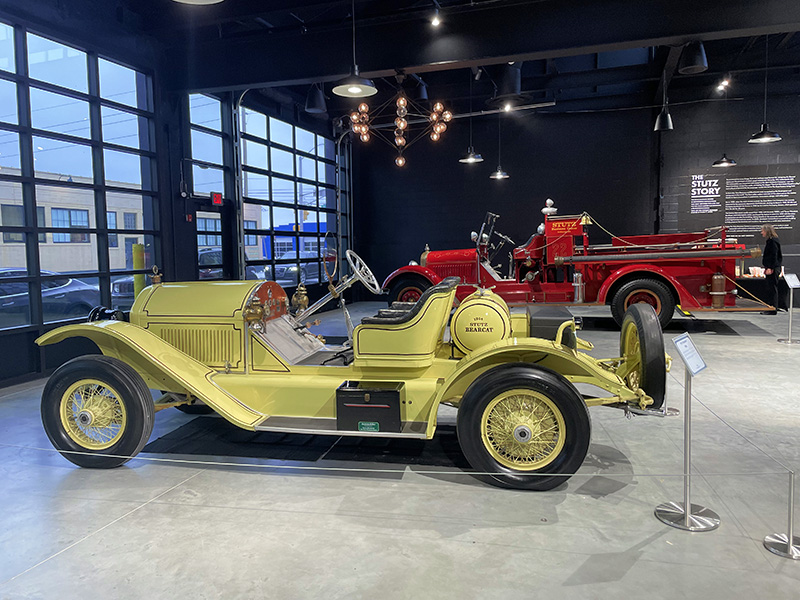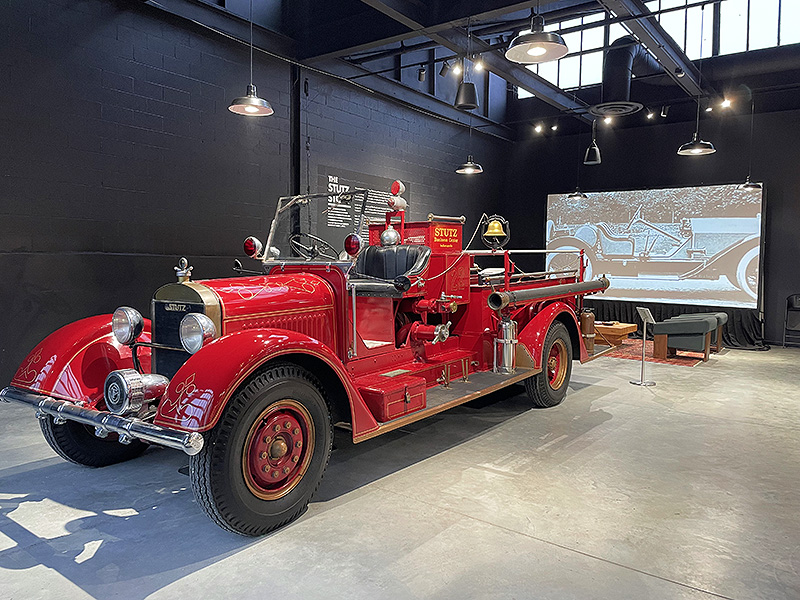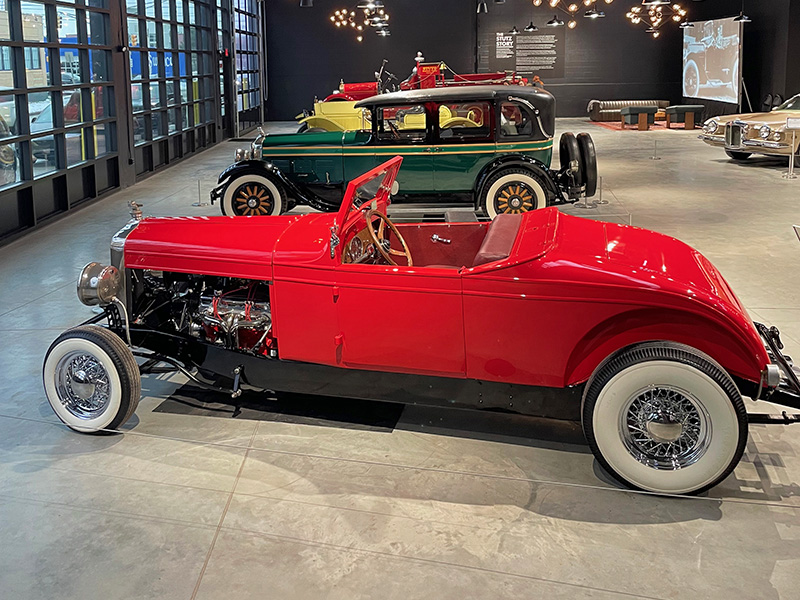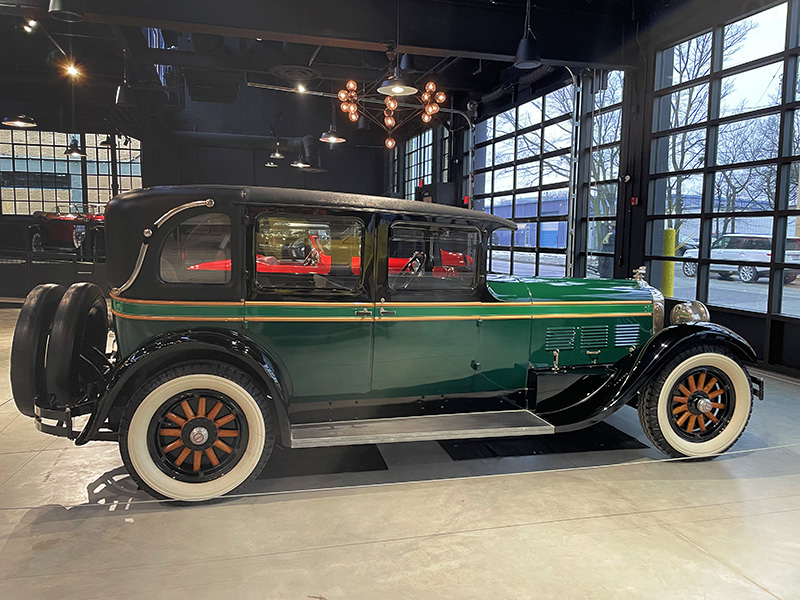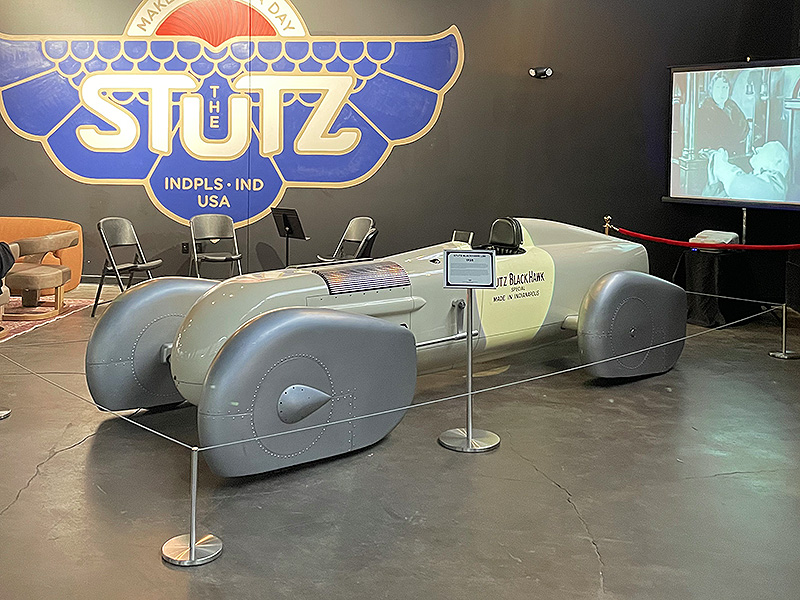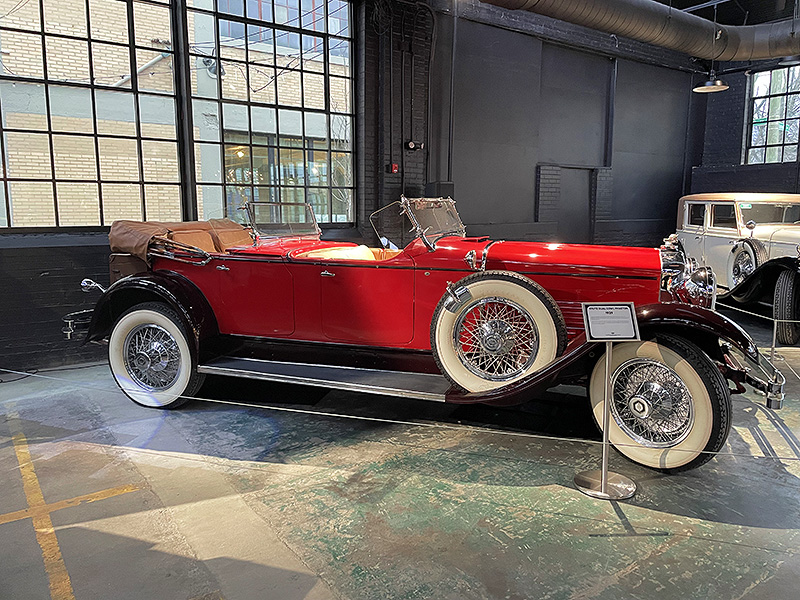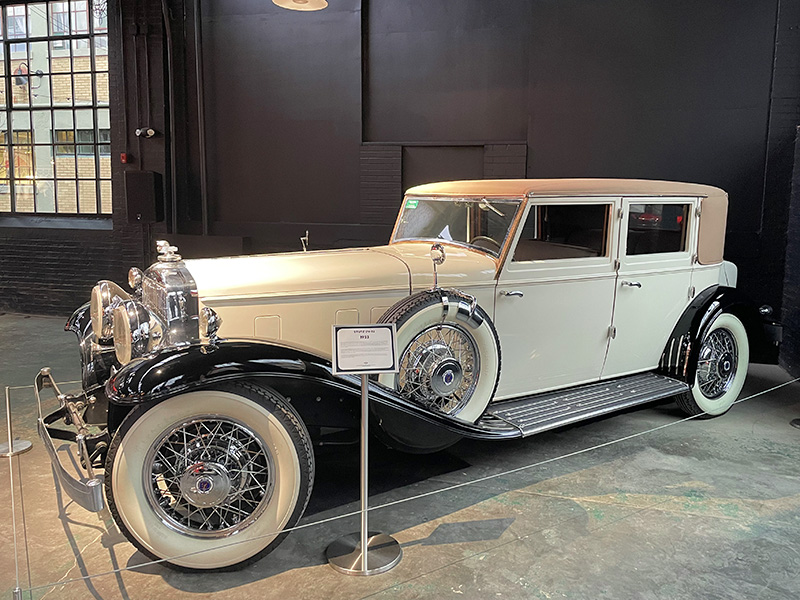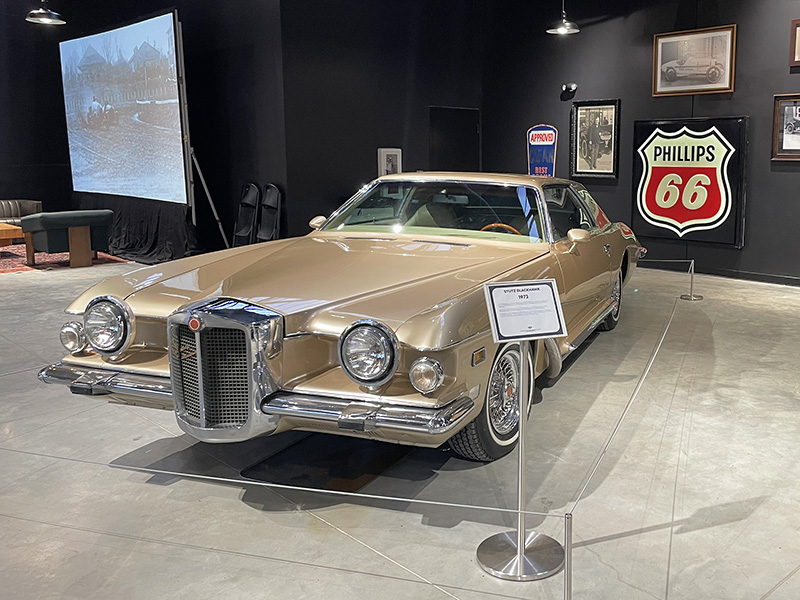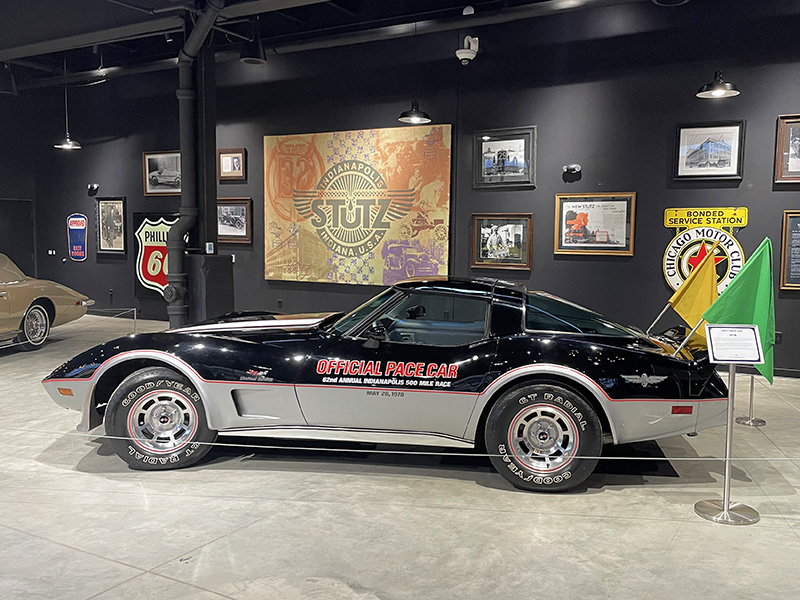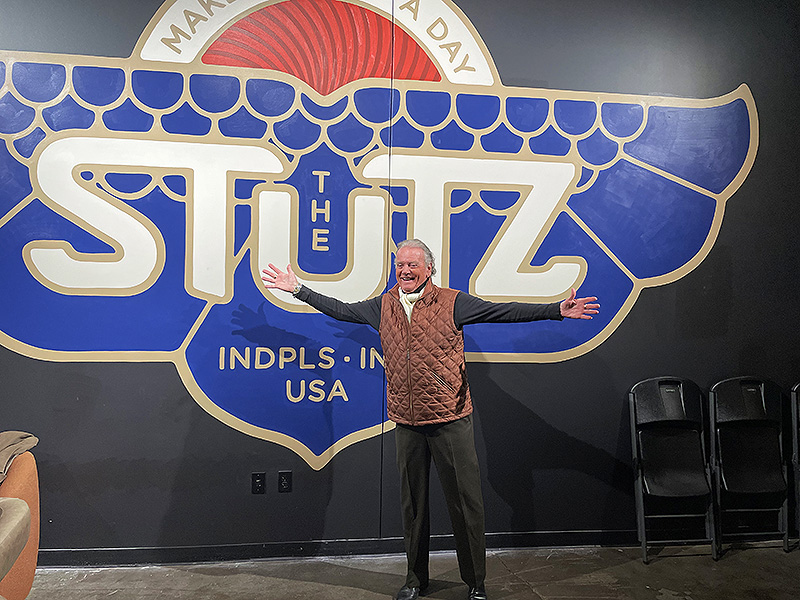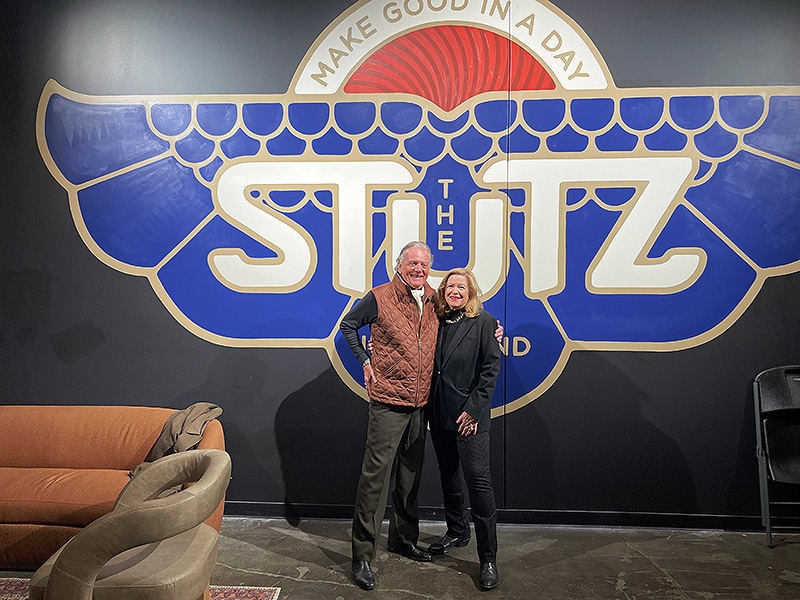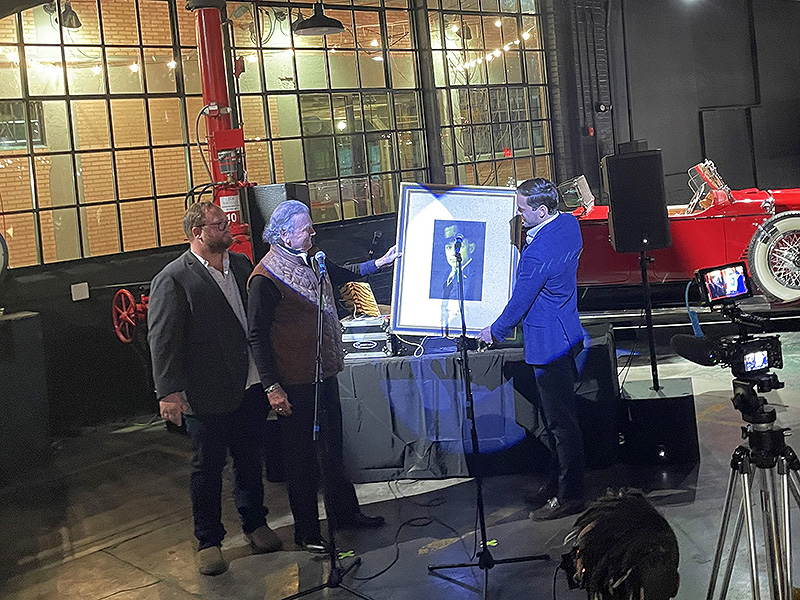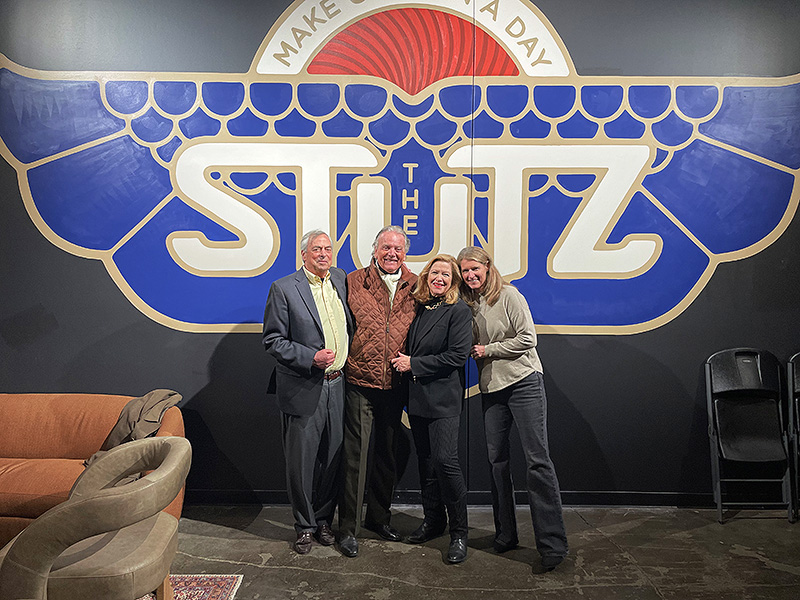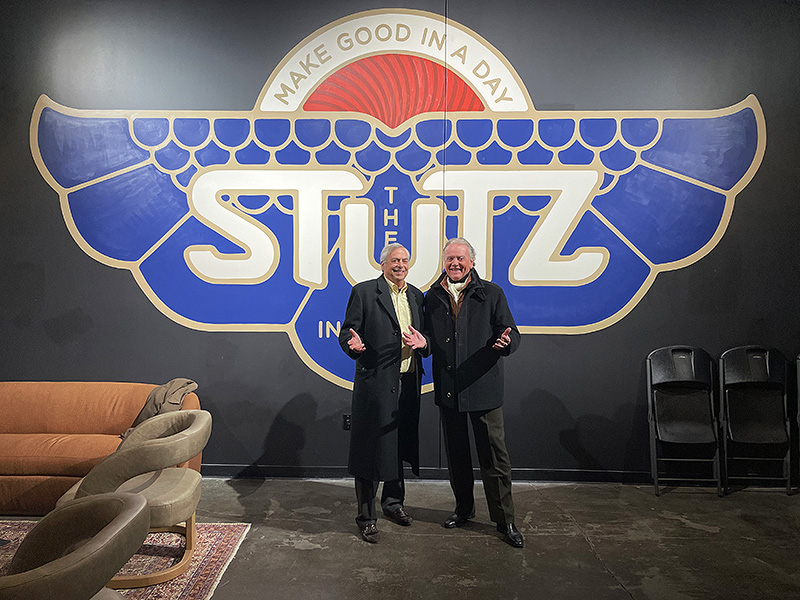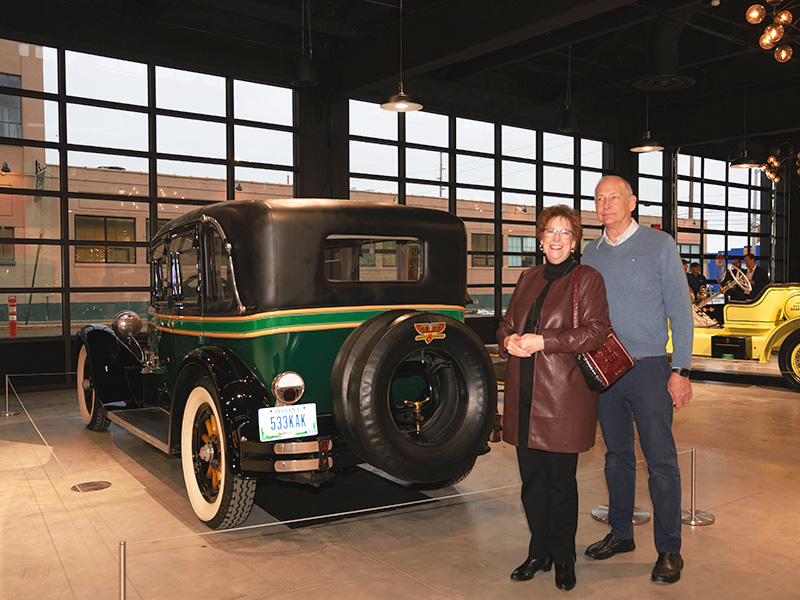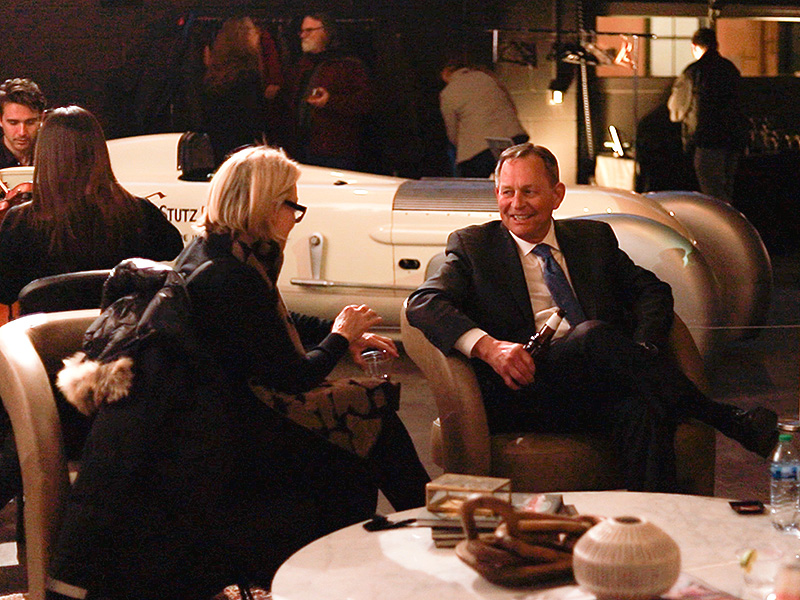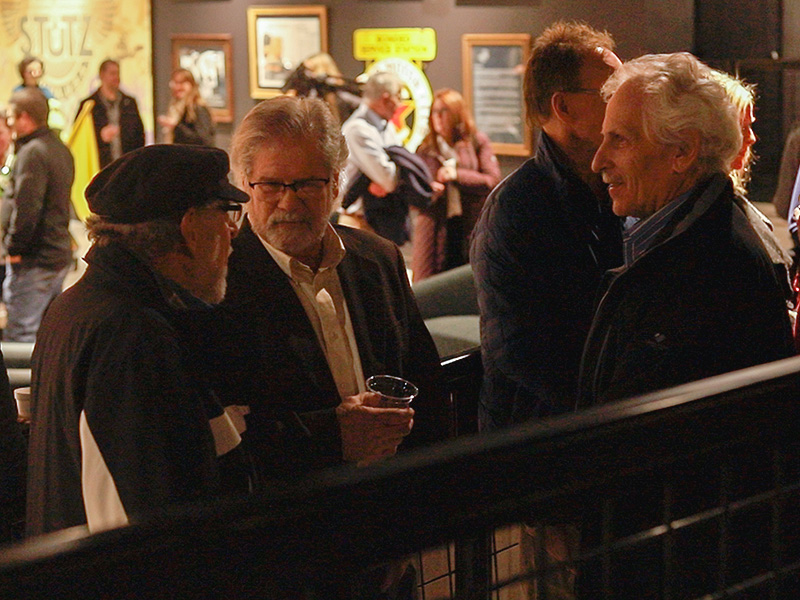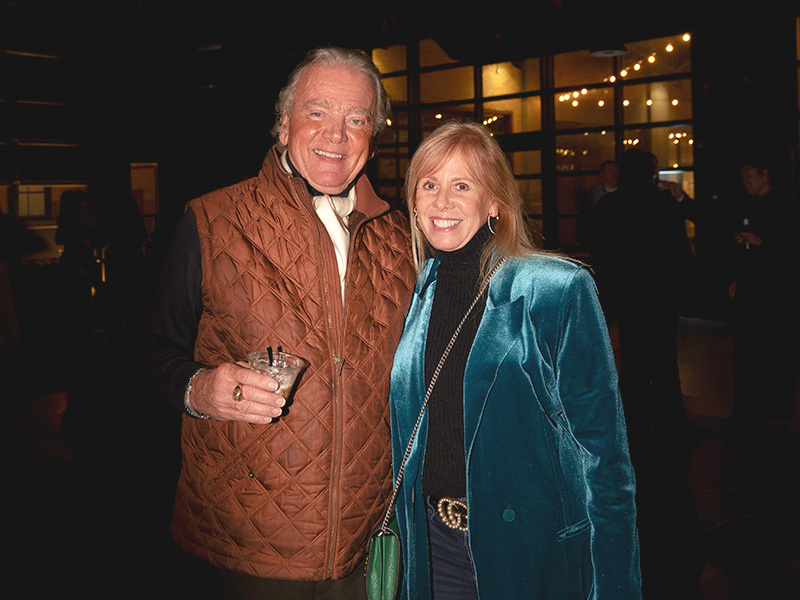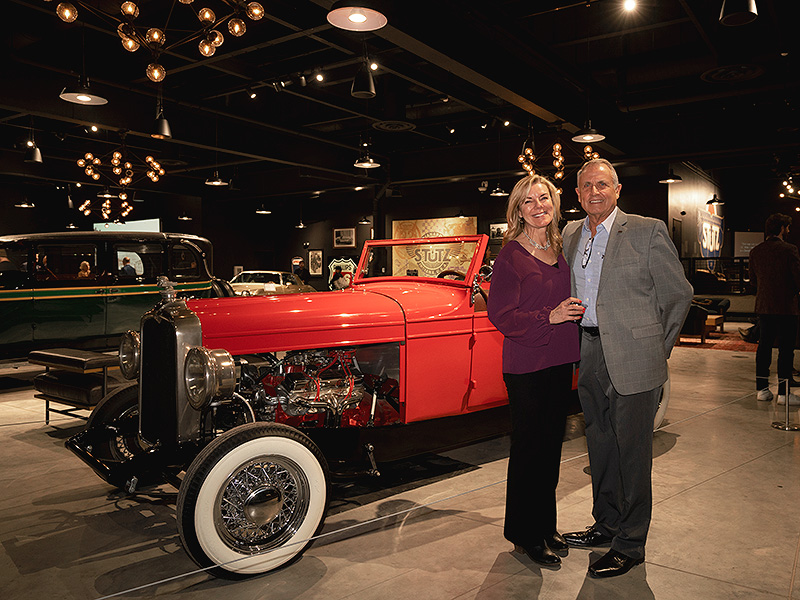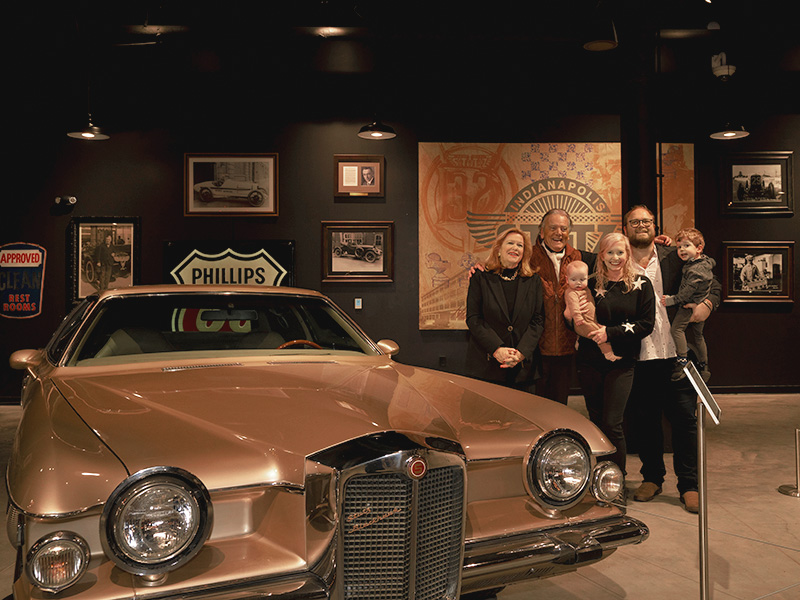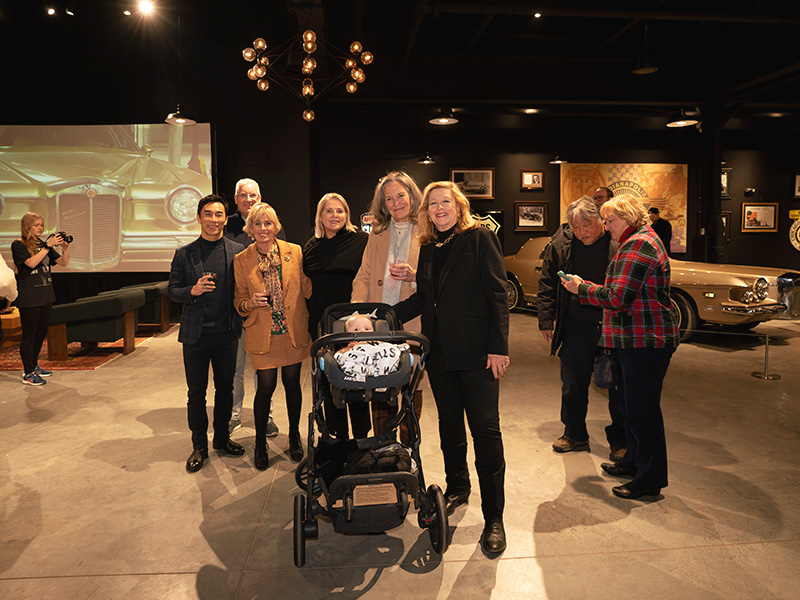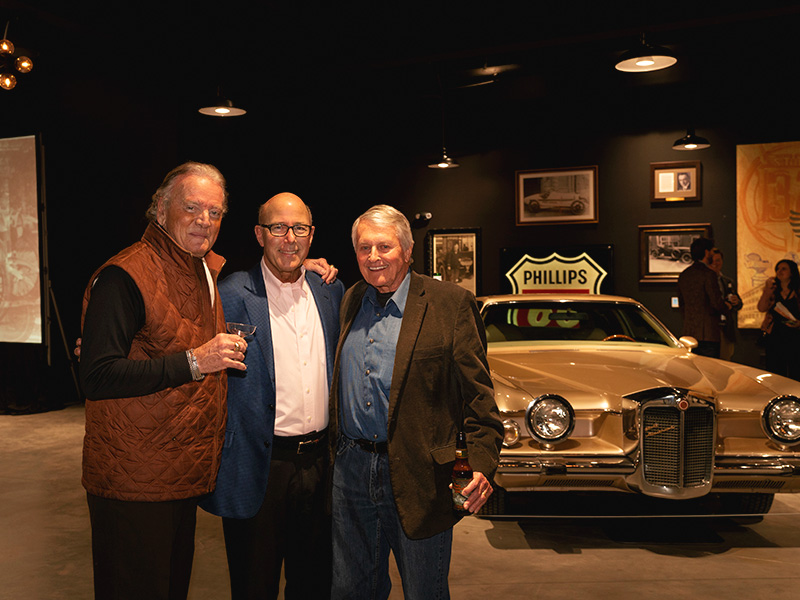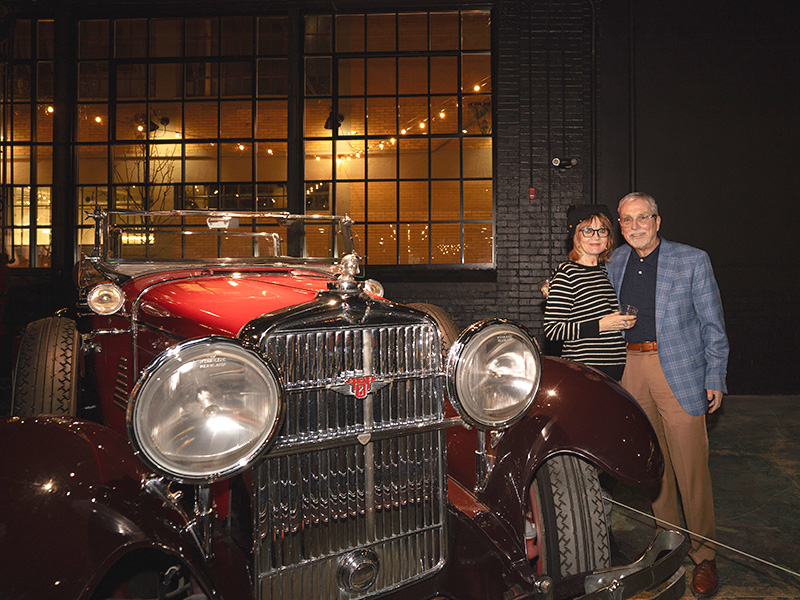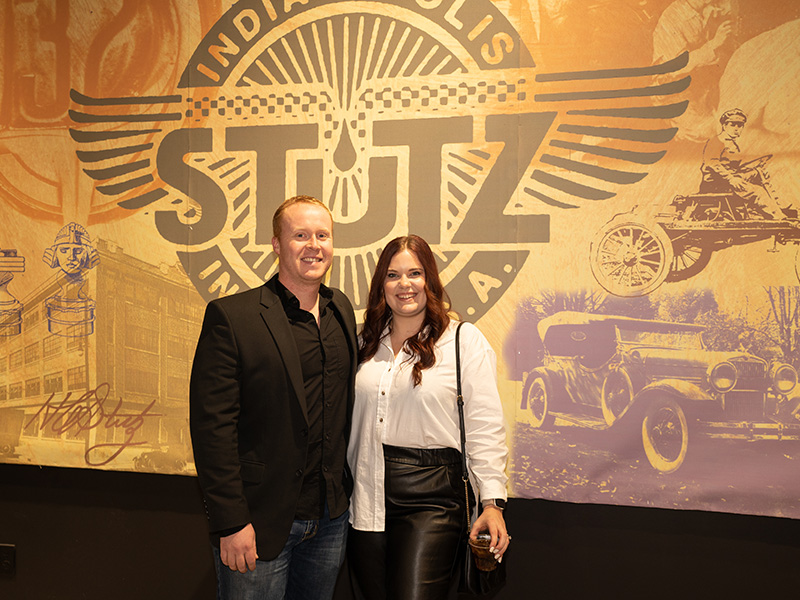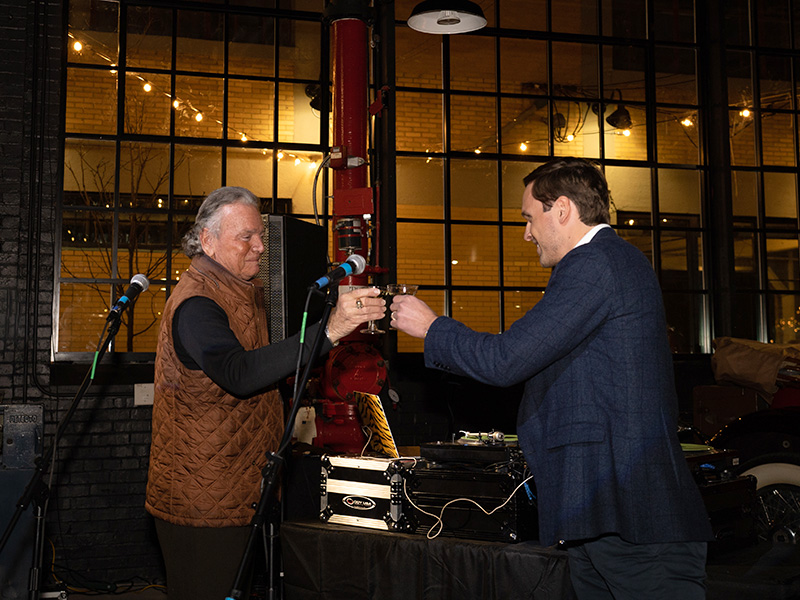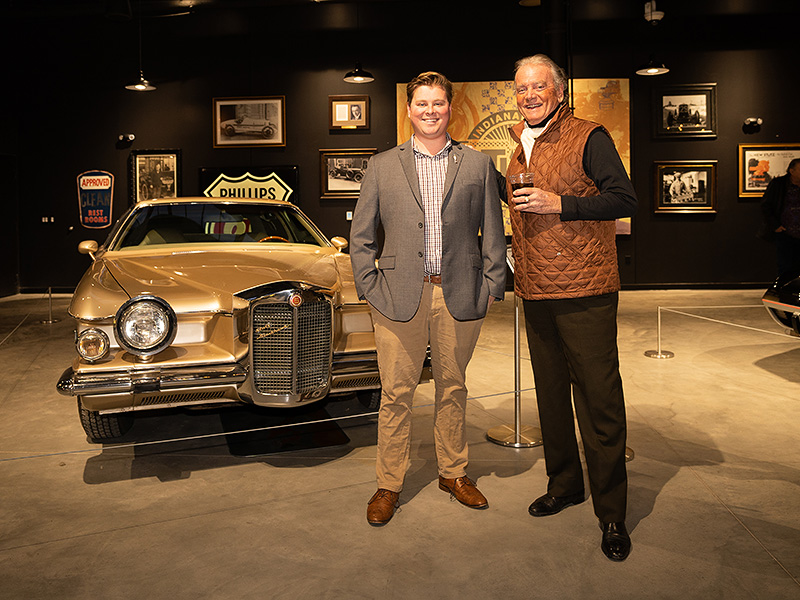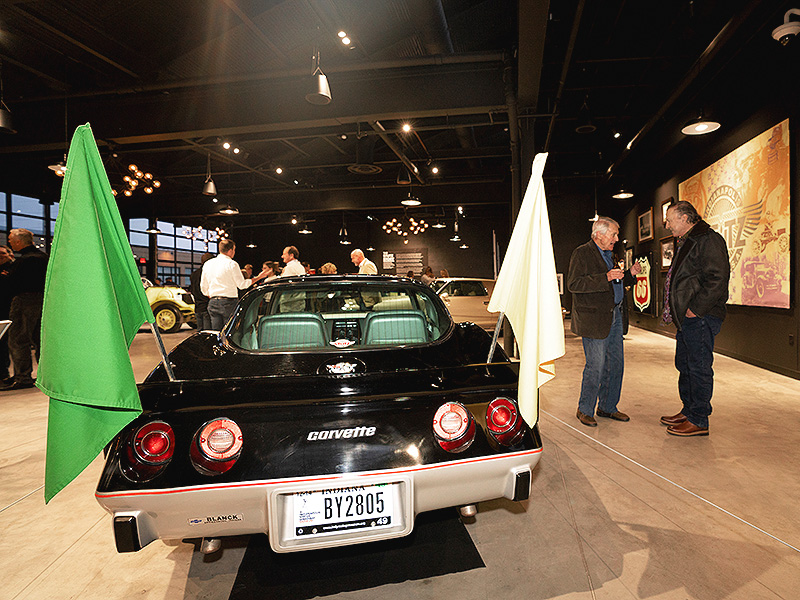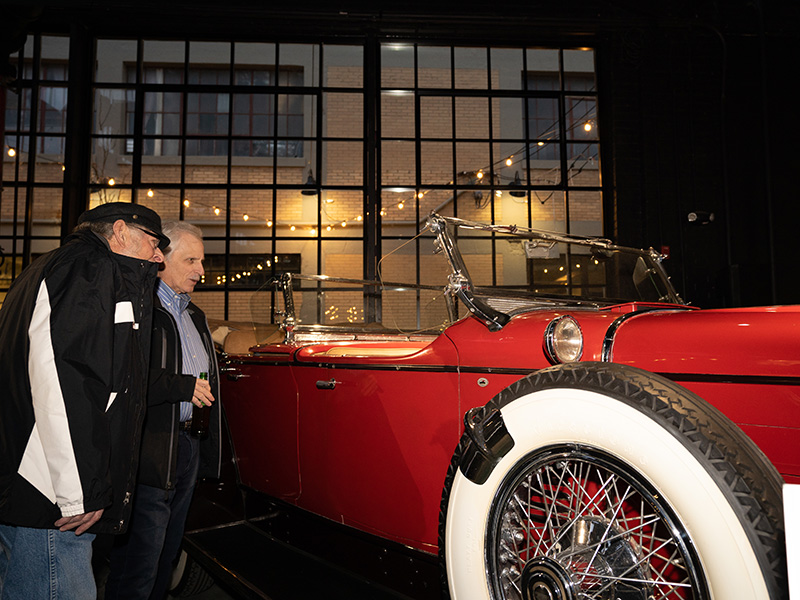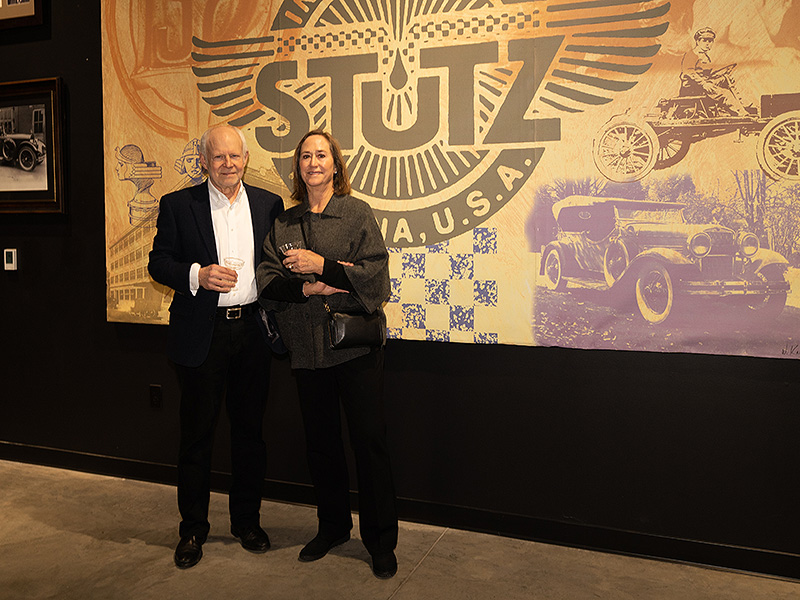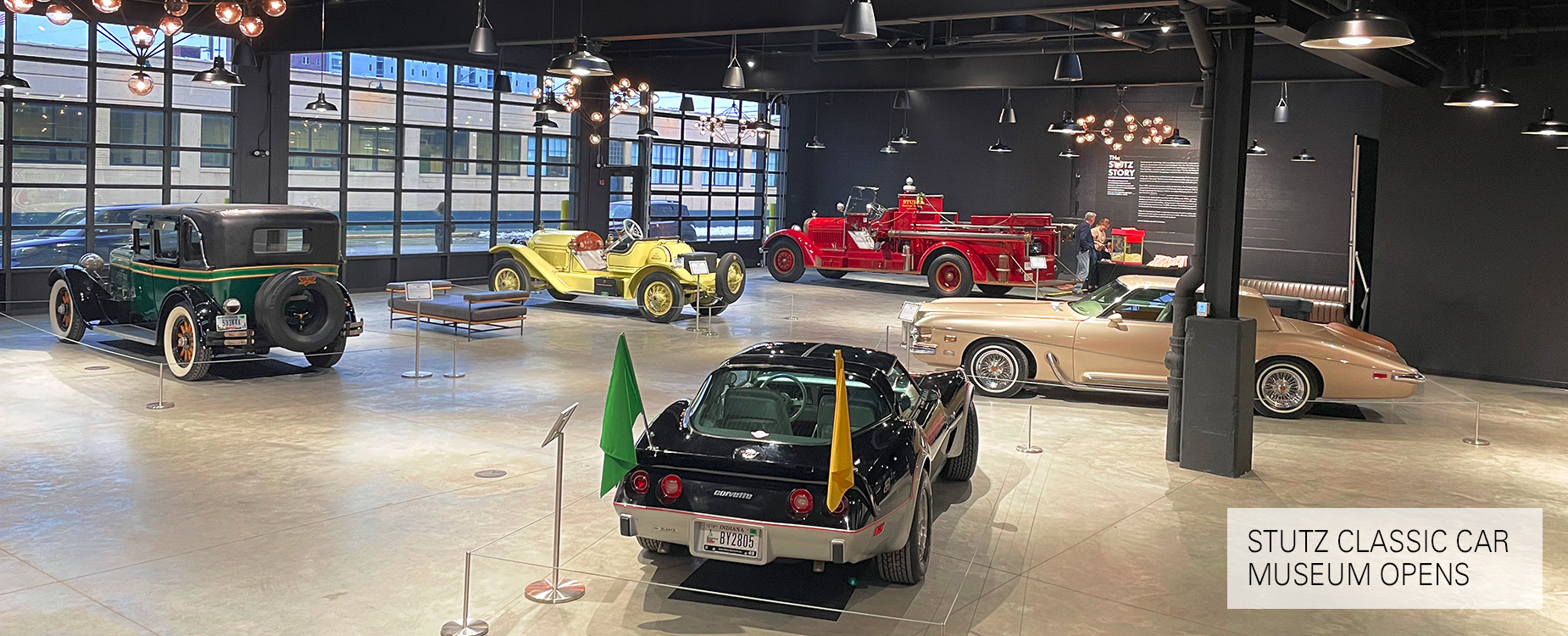
New Classic Car Museum Opens In Former Stutz Motor Car Company Building Downtown
SomeraRoad and Turner Woodard collaborate on the Stutz Car Museum, showcasing rare Stutz branded cars and Indianapolis history
January 2023
Located in the iconic Stutz building off of 10th Street, the newly opened Stutz Car Museum showcases nine classic cars on loan from Turner Woodard’s personal collection, most designed and manufactured in the Stutz factory building a century ago. Created to be an authentic community destination, the 10,000 square-foot museum will be free and open to the public on Thursdays and Fridays from 4:00 - 8:00 p.m. and on Saturdays and Sundays from 10:00 a.m. - 6:00 p.m.
“The Stutz building marks a unique time in automotive history, a time when Indianapolis was considered a carmaker’s city thanks to Harry C. Stutz,” said Ian Ross, Founder and Principal, SomeraRoad. “The cars are true works of art, worthy of preservation, and we’re proud to play a role in keeping that history alive.”
“I’m pleased the new owners of the Stutz Factory see the value of its historic image and brand and that they’re continuing Indiana’s rich automobile heritage with the Stutz Car Museum,” said Turner Woodard. “I’m honored to put these nostalgic automobiles on loan in such a creative public space. I’m certain that the allure of these beautiful cars will catch on.”
In February, automobile lovers are invited to experience car memorabilia and an up close and personal look at the opening collection, which includes rare automobiles like:
1914-1923 Stutz Bearcat
A luxury sports car built by Harry C. Stutz in just ten days, the Stutz Bearcat finished 11th in the first-ever Indianapolis 500, hence the Stutz Motor Car Company slogan of “The car that made good in a day!” Rebuilt in 1954 to resemble the original, the museum model has been driven less than 200 miles since its restoration. The Stutz Bearcat is considered to be America’s first real sports car, making it hard to find, with only 12-15 originals in existence today.
1920 Stutz Fire Engine
Built by the Stutz Fire Engine Co. of Indianapolis from 1919-1928, Stutz fire engines replaced horse-drawn fire fighting equipment being used at the time, selling well nation-wide due to their dependability. The Indianapolis Fire Department purchased the museum model in 1921, where it remained in use until 1962. There are currently only five or six others in running condition today.
1926 Stutz Speedster – Straight Eight – Hot Rod
Turner Woodard always wanted a Hot Rod, so when he approached retired mechanic Cliff Burlew about his idea to repair the 1926 classic, Cliff jumped at the opportunity. A true one of a kind, the “Cliff Hanger” is a result of Turner’s vision for his long-awaited Hot Rod.
1927 Stutz Safety 8
The Vertical Eight Model AA has a four-passenger body and was designed to be five inches lower than the competition, thanks to the use of a Timken worm-drive axle and a double drop frame. The model was one of the very first to have safety glass and hydraulic “Juice” brakes, going on to win every American Stock Car race that it entered, and eventually being declared the World’s Champion.
1928 Stutz Black Hawk LSR
The Stutz Black Hawk Land Speed Record (LSR) was the vision of driver Frank Lockhart, the 1926 winner of the Indy 500. Focused on beating the land speed record, Lockhart partnered with Fred Moskovics of the Stutz Motor Car Company to build the special LSR car in the Stutz Factory in total secrecy, debuting on February 12, 1928. Sadly, Lockhart lost his life two months later, while attempting to break the record in Daytona Beach. There are only two replicas of the Black Hawk Special around today.
1929 Stutz Dual Cowl Phaeton – Model M-26
All Stutz automobiles in 1929 were Model M’s, powered with a 322 cid and 185 horsepower overhead camshaft straight-eight engine. The Stutz Model M Supercharged Coupe was dramatic, featuring a very low-slung, one-off coupe coachwork by Lancefield.
1933 DV32 Stutz Hollywood
Built as a potential show car for the 1933 Chicago World’s Fair, this four-passenger sport sedan was designed to be high-elegance and chauffeur-driven, hence the concealed bar in the rear compartment. One of the fastest production cars in the country, the 1933 model advertised a top speed in the 100+ mph range and sold for $17,000 (equal to about $360,000 today). Only 200 Hollywood’s were produced by the Stutz Motor Company before effects from the Great Depression forced the manufacturer to close in 1935.
1973 Stutz Blackhawk
Considered to be an American ultra-luxury car (1971-1987), only 500 Blackhawks were ever built. Elvis Presley purchased the first one ever made and would go on to buy three more, with other celebrities like Frank Sinatra, Dean Martin, Lucille Ball and Liberace using the Blackhawk as a fashion accessory. Other than the name, the car bears no resemblance to the original Blackhawk (1929–1930).
1978 Chevrolet Corvette Pace Car Edition
One of the most desired Corvettes of its time, the 1978 Indy Pace Car spawned a tradition of using “America’s Sports Car” as an official pace car, in addition to marking Corvette’s 25th anniversary of production. To commemorate the milestone, the second special-edition Corvette was the 1978 Corvette Indy Pace Car, which features a special front and rear spoiler and a two-tone paint scheme with black over a silver metallic and a bright red pinstripe between.
The Stutz Car Museum is available for private parties, tours, and events. Be sure to check www.thestutz.com for availability, current museum hours, and for information on guided historian talks and tours. The Stutz building has a rich history of use, from car production in the early 1900s, to Eli Lilly, to most recently, a center for the arts. Known for its natural light and creative tenants, the four-story factory is being transformed to feature more pedestrian-friendly designs, with access to landscaped alleyways, flexible event space, and the city’s top food, beverage, retail, and fitness outposts. The museum project is just one part of SomeraRoad’s recent $100M investment in the 1912 building, a plan that will reimagine the auto-forward architectural asset to meet the needs of the city today.
